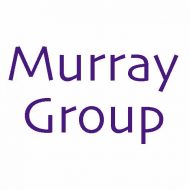M.W. Little, J.-K. Kim, K.K. Murray, “Two-laser infrared and ultraviolet matrix-assisted laser desorption/ionization,” J. Mass Spectrom.38 (2003) 772–777. doi:10.1002/jms.494.
Abstract
Matrix‐assisted laser desorption/ionization (MALDI) was performed using two pulsed lasers with wavelengths in the IR and UV regions. A 10.6 µm pulsed CO2 laser was used to irradiate a MALDI target, followed after an adjustable delay by a 337 nm pulsed nitrogen laser. The sample consisted of a 2,5‐dihydroxybenzoic acid matrix and bovine insulin guest molecule. The pulse energy for both of the lasers was adjusted so that the ion of interest, either the matrix or guest ion, was not produced by either of the lasers alone. The delay time for maximum ion yield occurs at 1 µs for matrix and guest ions and the signal decayed to zero in ∼400 µs. A mechanism is presented for enhanced UV MALDI ion yield following the IR laser pulse based on transient heating.




